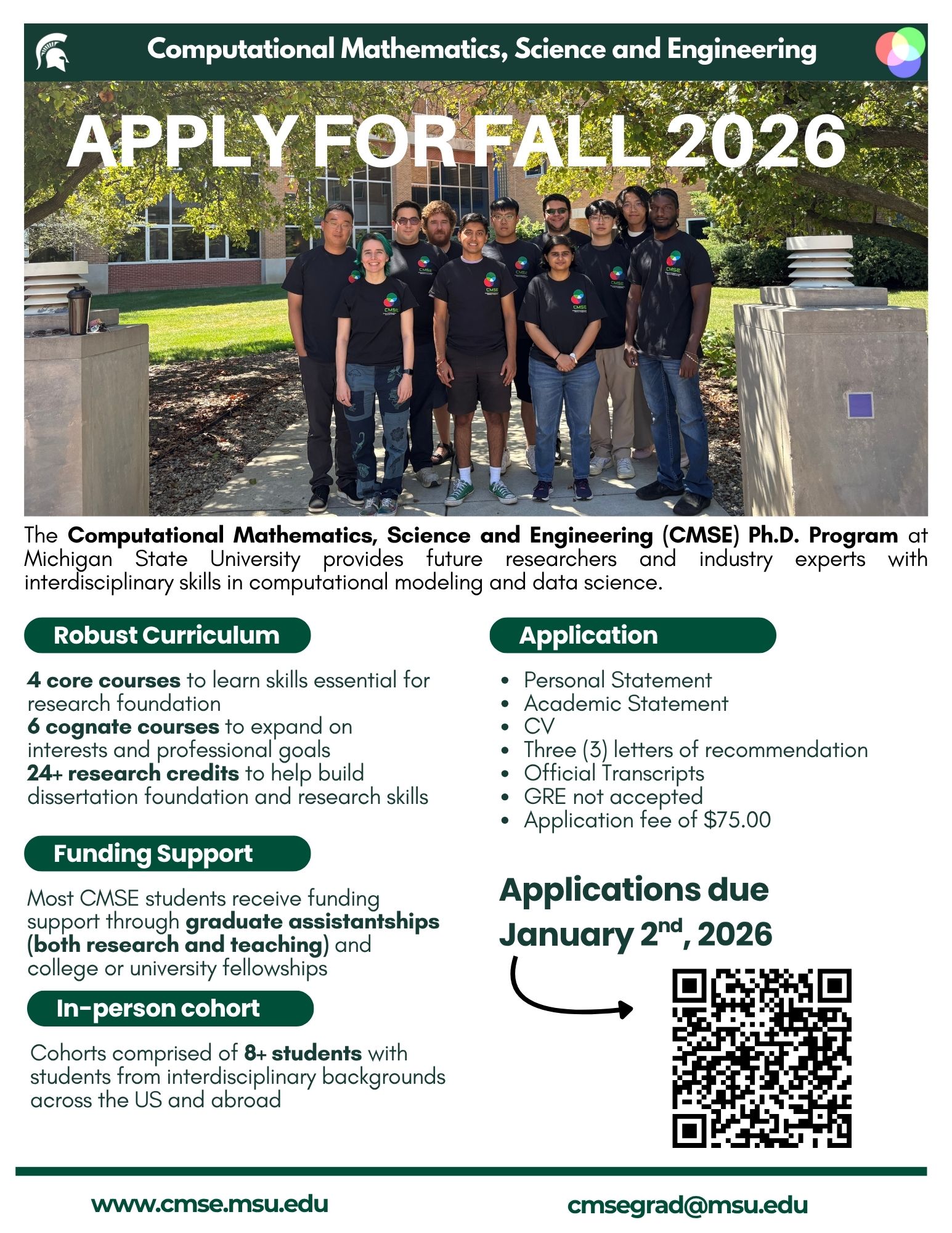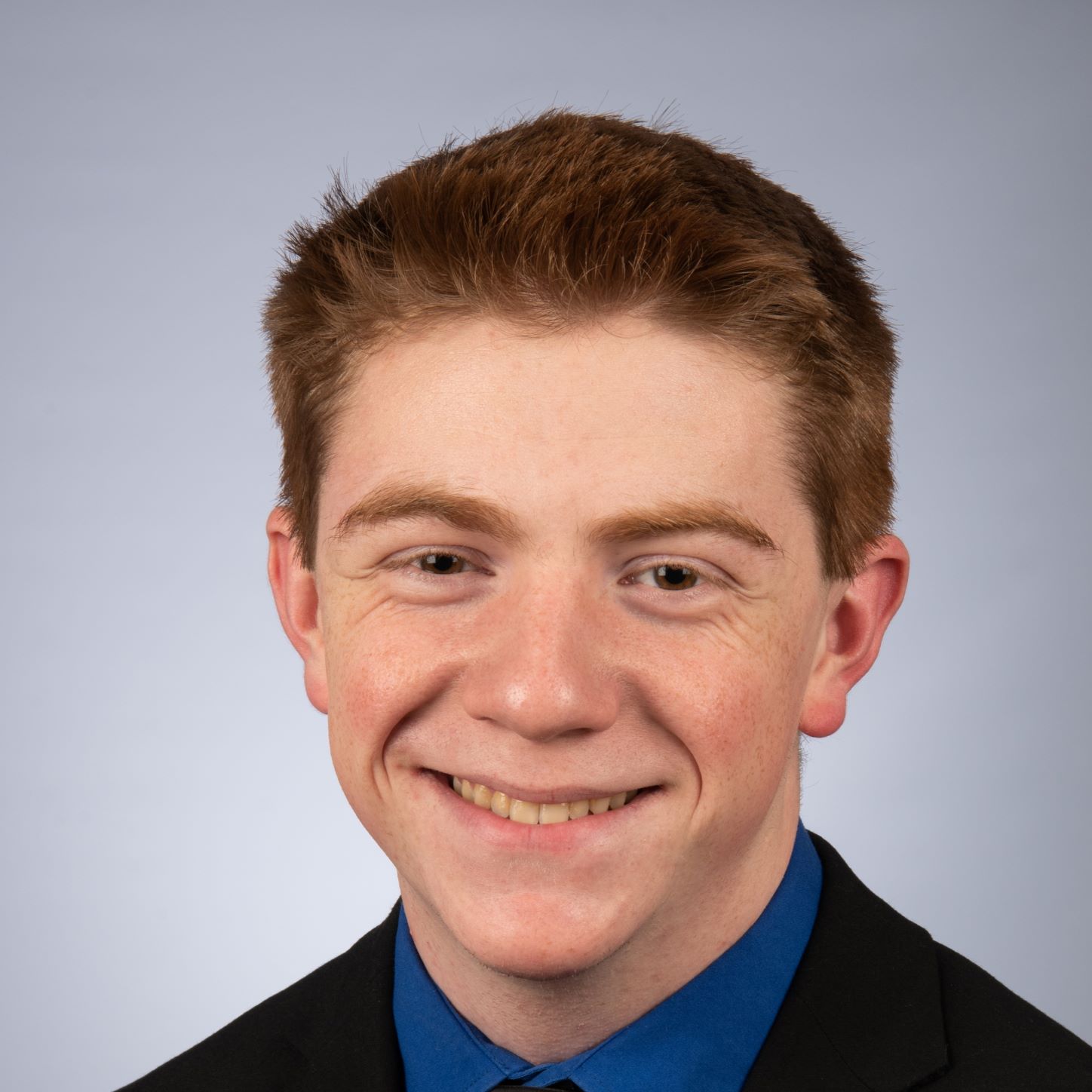Comprehensive Exam of CMSE Mandela Quashie
Department of Computational Mathematics, Science & Engineering
Michigan State University
Comprehensive Exam Notice
Friday, May 9, 2025 at 12:00PM
Location: EB 1502/3
Zoom: 941 3259 5054
Passcode: 114229
Moment-Enhanced Particle-in-Cell Method
By Mandela Quashie
Abstract:
The Vlasov–Poisson system plays a fundamental role in modeling the evolution of collisionless
plasmas through self-consistent electric fields. Despite its importance, the system’s
infinite-dimensional nature makes direct simulation challenging, particularly when
accuracy, efficiency, and physical structure preservation are required. Standard Particle-in-Cell
(PIC) methods, though widely used, often rely on large particle counts and suffer
from statistical noise and poor resolution in regions of phase space with sparse sampling.
This comprehensive develops a moment-enhanced Particle-in-Cell (PIC) method that addresses
these challenges by augmenting each superparticle with local moment information—including
density, momentum, and higher-order derivatives—providing a richer, more accurate
representation of the underlying distribution function. The framework is constructed
via a Poisson bracket formulation inspired by the reduction techniques of Scovel and
Weinstein, resulting in a finite-dimensional model that preserves the Hamiltonian
structure of the original Vlasov dynamics.
Analytical derivations are coupled with numerical simulations of the one-dimensional
Vlasov–Poisson system to assess the method’s performance. The results demonstrate
improved numerical stability, reduced noise, and enhanced conservation of physical
invariants such as energy and momentum. By combining geometric structure preservation
with efficient phase-space representation, this work establishes a foundation for
next-generation kinetic solvers with broad applicability in plasma physics and beyond.
Committee:
Co-Chair: Andrew Christlieb (CMSE and Mathematics, Michigan State University)
Co-Chair: Qi Tang (School of Computational Science and Engineering, Georgia Institute
of Technology University)
Joshua W. Burby (Physics, University of Texas at Austin)
Brian W. O’Shea (CMSE, Michigan State University)
Keith Promislow (Mathematics, Michigan State University)



